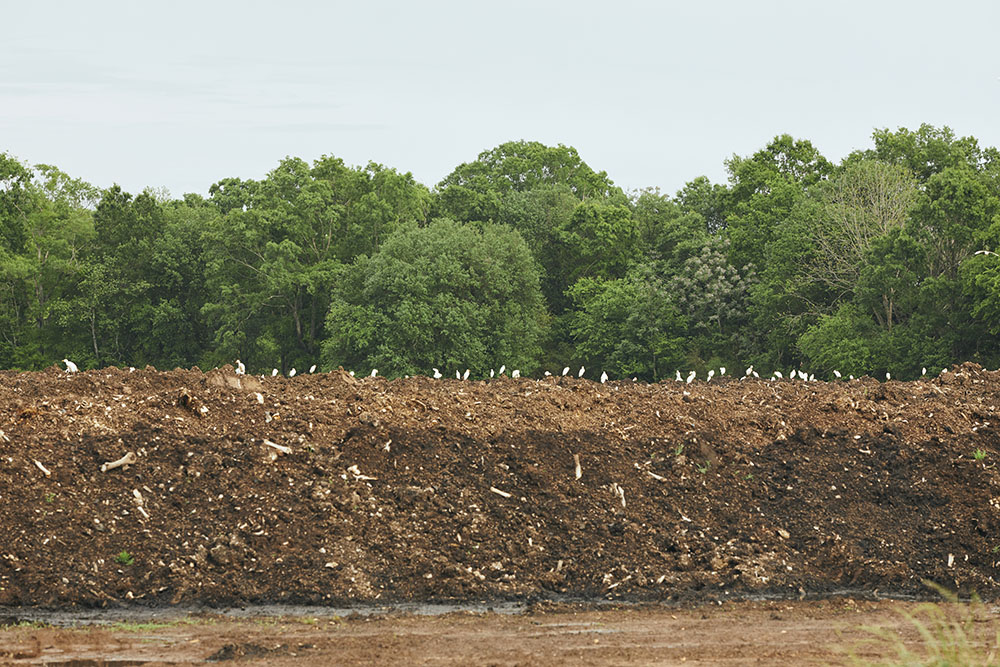Press Release FOR IMMEDIATE RELEASE Regenerative Organic Alliance Launches Journey to ROC™ Initiative in Partnership…

The truth will set you free… but when?
This carving is one of a few panels that struck a chord as I departed the OTA’s Organic Week this month. I contemplated these carvings on Union Station, the second of which declared “the truth shall set you free.” Regenerative practices are proving themselves out as a true solution to the greatest human-induced environmental problems of our time. I thought about how, as we make our way with our first audits, we are endeavoring a human thought through the ether that serves not a political country, but the healing of Earth. How we are also endeavoring a human thought that will in fact heal Earth.
Last week, the ROA joined forces with 180 other organic supporters in the nation’s capital for the OTA’s Organic Week, with a focus on advocacy for organic food. The goal was (and still is) to advocate on behalf of the organic consumers and farmers across the country. We applaud the OTA’s excellent job in comprehensively preparing advocates with well-researched and strategic talking points as well as in choreographing the eager advocacy teams all over Capitol Hill. We knocked on doors, shared the good word of the ROC, and met with policymakers. We also felt the ROC is being well received and supported by key members of the organic community. If you’d like to see where the USDA organic standard is today, The Rodale Institute has created a comprehensive assessment to support understanding and clarification.
Flying west across the country bore evidence of a Midwest deep underwater and fills the heart with despair. There seems to be no relief in sight for these farms. Added to this recent reports of sea water rising in coastal farming communities, combined with the ill effects of industrial farming, in the southeast and the subsequent salinization of their soil have devastated these regional farming economies. The climate crisis is not coming in 12 years. It is here, and NOW.
Proof of dire conditions is being met with proof of solutions as the regenerative movement is quickly taking hold across the globe. Regenerative organic farming practices can solve these problems now. Healthy regeneratively farmed soil sequesters up to 30% more carbon than conventional chemically farmed land. Regeneratively farmed soil has the capacity to retain 40% more water than conventional chemically farmed land. You can witness this in Biggest Little farm, a magnificent film that is premiering across the country right now, sharing the story of ROC Pilot Apricot Lane Farms, and how proprietors John and Mollie Chester transformed a virtually infertile former citrus farm in Southern California into a rich ecosystem engaging soil restoration, rewilding, and over 70 fruit varietals, to name a few.
Truth: We are focusing on solutions. Right now. And that includes the conclusion of our first ROC Pilot audits in Nicaragua. Read on for reflections on that experience. As tornadoes descend upon the heartland and floodwaters refuse to abate as seas continue to rise, so too will our efforts to mitigate and reverse these crises. And so may it be so, that the desert blossoms as the rose.
We are grateful to have you on the journey with us.
![]()
Elizabeth Whitlow & the ROC Team
Executive Director, ROA

ROC Pilot audits have begun.
We’ve just returned from our first audits for the ROC Pilot Program among the tropical fruit growing regions around Masaya in southeastern Nicaragua. The area is unique for beginning our regenerative organic audits as it boasts multiple soil varieties in the shadow of an active volcano. The region also has a long dry season and very little-to-no infrastructure for irrigation or household water delivery. That said, we found regenerative organic practices producing bountiful fertility despite the odds, along with insightful learnings that will improve the ROC Standard.
The nature of the ROC Pilot is that we collaborate with all the different entities that make a successful audit: from Certification Bodies to the smallholders and their related co-ops to the brands that are supplied. That said, we are hyper-focused onquality outcomes. This will always be tantamount to pushing or rushing the critical process of the ROC audit.
Our accreditation process is admittedly rigorous and we are aiming for comprehensive, thorough reviews of each submission. Not simply rubber stamping to get to a label on pack, the ROC looks towards the deeper conversation that sets forth further innovation in the field alongside key performance indicators. Another learning is the need to develop more field training around regenerative organic concepts which we are working on closely with Rodale and new prospective partners.

The Return of a Generation
Robyn O’Brien, in a recent episode of Regenerative Voices, a podcast created by At The Epicenter, shared the key point that we’ve lost a “generation of food education” when talking about how we have been distant with what is in our food and how it’s made.
Despite that loss, we are now seeing a great return to the land. We recently attended the Founders dinner for the Grassfed Exchange. What amazed us was how many ranching families traveled with their children, and how many young adults are coming back to the farm, with credit to new opportunities to farm and ranch regeneratively. This note is only one of many underscores that the diversity of farmers and ranchers is beginning to diversify. The next generation has arrived, and they are interested in and actively implementing regenerative and organic practices.
One example is our Pilot Participant Alexandre Family Farm who also attended the Grassfed Exchange, along with folks from Armonia, who are ardent supporters ofBreathe Deep Farm, another Pilot that we will be entering into audits in the coming weeks and months.
Listen to Robyn’s podcast here.

Blue and Green and White
Corinne Kocher / words
Bailey Garrot / images
When Will Harris inherited the family farm, he started with around 1,000 acres. In the years since, transitioning toward regenerative agriculture, he started buying up other farms in the area as land became available. Today, White Oak Pastures owns around 3,000 acres of pasture.
Much of the farmland that the Harris family acquires was previously commodity row crop land that had been used to grow peanuts, corn, and soybeans for years. If you’re starting with fertilizer-dependent, monoculture-designed, raw, cracked, low-organic-matter soil – and your business is based on perennial pasture – well, what do you do?
“You kickstart the cycles with animal impact.” Will’s talking about White Oak Pastures’ process of “hay bombing”.
Hay bombing is less dramatic than it sounds. A herd of 2,000 or so cows, calves, and bulls stay in a field for an extended period of time. They are fed 40 bales of hay a day, in addition to the pasture grazing. In the first field we looked at, the herd had been there from December through March.
Cattle are an especially powerful tool, because they are, in Will’s words, a “walking fermentation tank”. The cattle eat, defecate, and knead any leftover hay into the ground with their hooves. When they’re done, the field is stripped bare – it is brown, and ugly.
But this walking fermentation tank technique provides a powerful kickstart to the ecosystem. After the cattle move to new pasture, the field is planted with perennial grass. There is plenty of rich, natural fertilizer available for the seeds, and the topsoil is craving some ground cover.
Changes happen slowly. The first year, a number of annuals take advantage of the newly disturbed soil, but some perennial grasses take root as well. The next year, the process may be repeated – perennials are planted, annuals shoot up early looking to overtake them, and cattle are used to mow them down. The proportion of perennial grasses grows again.
Year after year, the process is repeated, refined, and changes start to happen. The fly population that initially exploded starts to decline, because as the perennial plants start to take over, ecosystems friendly to predator insects return too. The plant species mix shifts. Water percolation in the pasture starts to improve as the organic matter in the soil increases, which boosts perennials and their deep roots.
“You can see animal tracks, and feces start to appear too,” explains Will. As perennial pasture starts to take over, more wild animals start to move in tangent with the pastured ruminants. Watching the white cattle egrets mingling with one of Will’s herds, I ask Will what indicators of health he looked for in his land, the large vital signs that indicated the pasture was doing well.
He lists a long list of things that you can measure, from water percolation to grass species per square foot, and then finally just points to the cattle egrets. “It’s signs of life. This place is teeming with life.”
Read more here.
Over the next two newsletters, Bailey and Corinne’s investigative and narrative storytelling will continue, a special feature we are proud to support. You can catch the ones you missed on their website, Shared Plates.